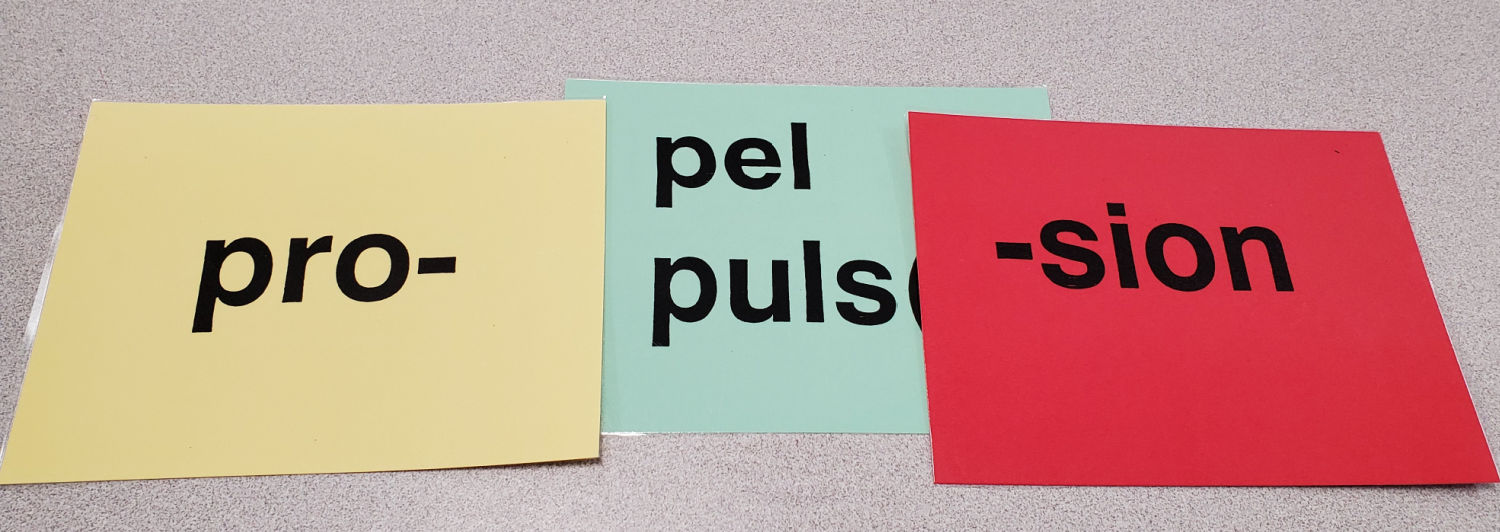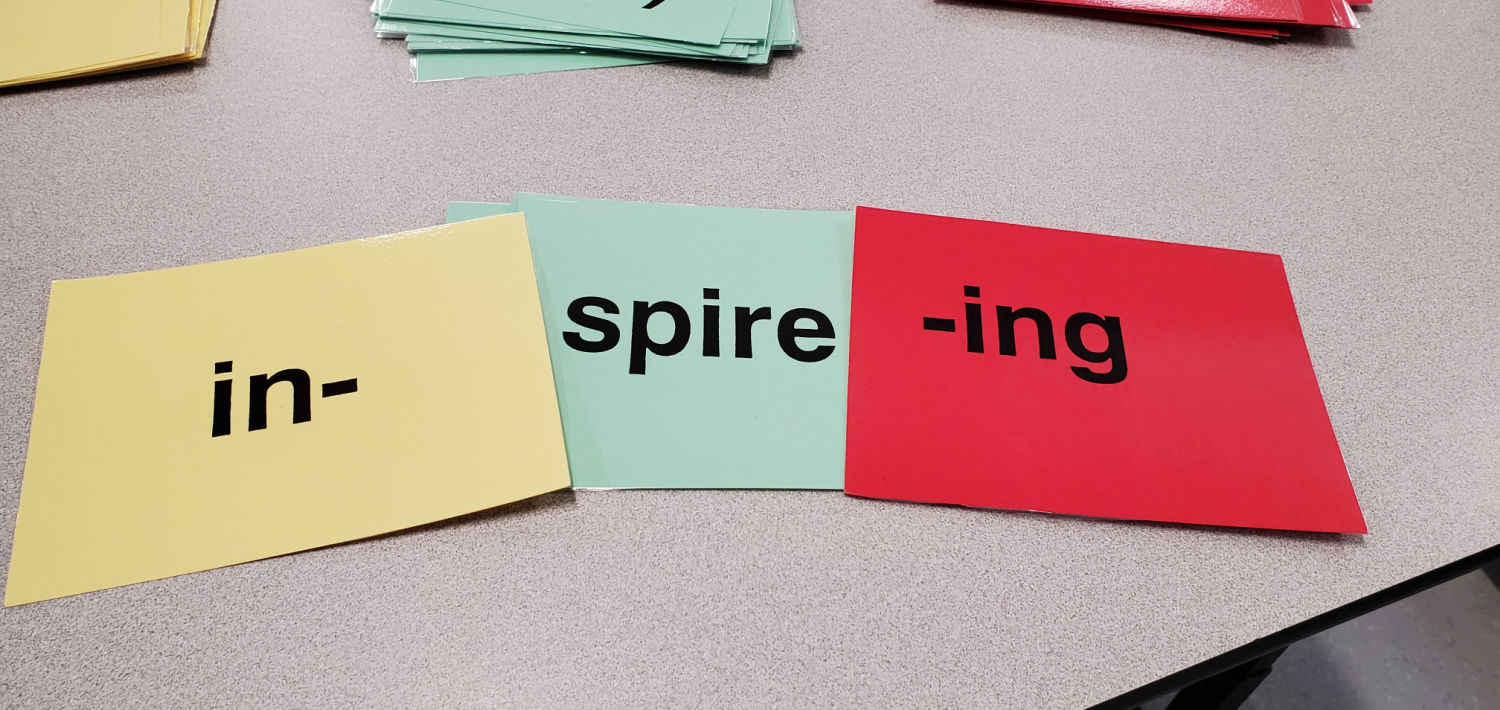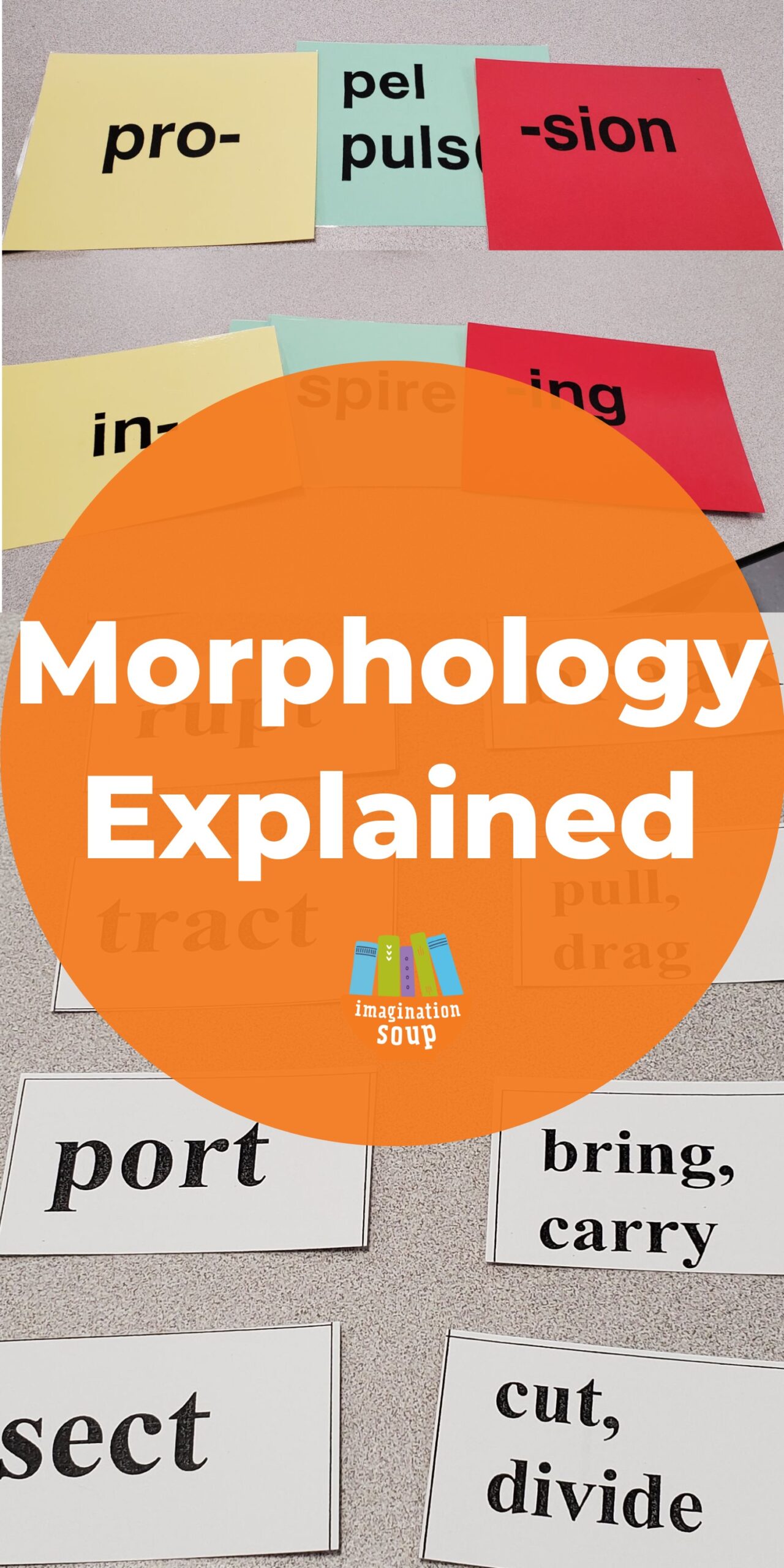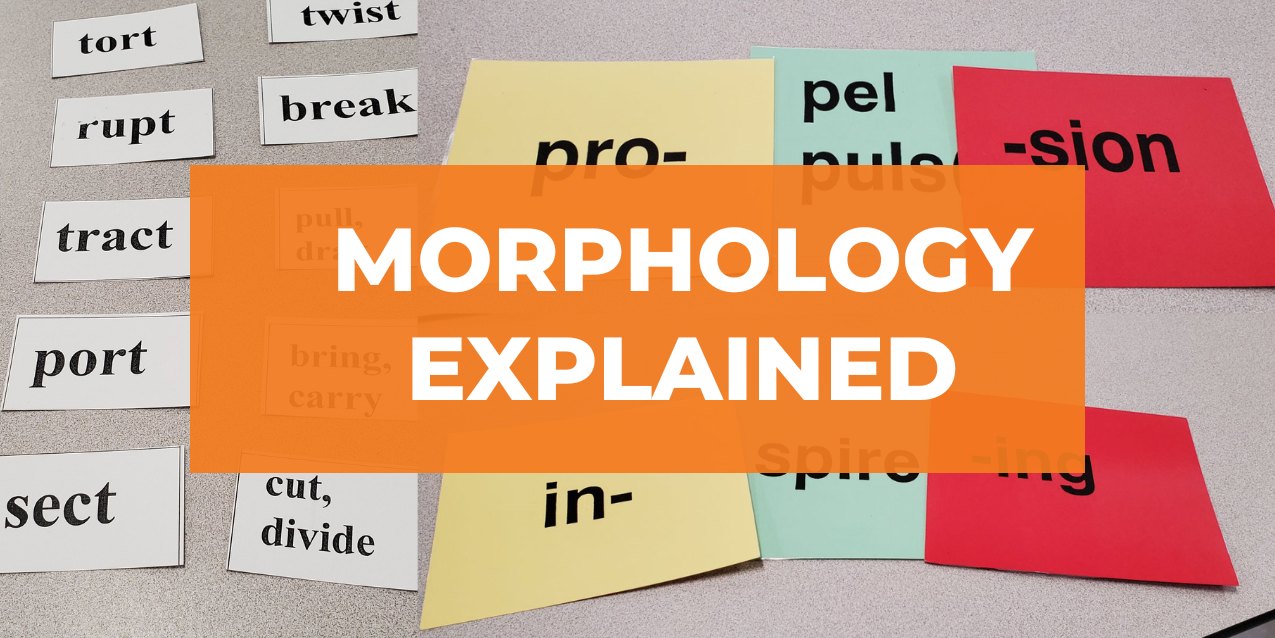One of my favorite parts of the week is when I go into classrooms to give morphology lessons. As soon as I come in the door, the students rush to get out their morphology binders and get ready to try to solve the “mystery” word that I put up on the board. Or, I might take a word that they’ve e-mailed me earlier in the week and “morph” it out with them, decoding the parts of each word.
“Wait… so astro…naut means star sailor?” one fifth-grade student asked.
“Yup!”
“That is so cool!” Anything that has students saying, “That is so cool!” during a reading lesson is worth sharing!

But what is morphology?
What is the morphology definition?
Why is morphology so important to include with reading strategies?
And how can you help support your own child in learning morphology?
Morphology is the study of the parts of words
Morphology is the study of the meaning of the smallest parts of words. Morph is a Latin root meaning form or shape. The suffix -logy means the study of. Morphology focuses on learning the meanings of morphemes, which are the smallest part of a word that has meaning.
A little morphology dictionary:
Morpheme: the smallest part of a word that still has meaning. Morphemes are the building blocks of our words. For example, foxes has two morphemes, fox and -es, which makes it plural.
Types of morphemes:
Affixes: a morpheme that is added to a base word or root and changes its meaning. There are two types: one, prefixes are added onto the beginning of a word and two, suffixes are added onto the end of a word.
Root words: a morpheme that holds the basic meaning of a word. They often don’t stand alone but need a prefix or suffix to have meaning. For example, in the word protract pro is the prefix and tract is the root. Many of our roots are Latin and Greek.
Base words: are different from roots in that they can stand alone and still have meaning. For example, in the word cats, the base word is cat.
Bound morphemes: bound morphemes are word elements that can’t stand alone and still have meaning.
Free morphemes: free morphemes are word elements that can stand alone and be meaningful.
English works kind of like Legos. We build words by attaching more parts onto the roots or base words. We can even build words by stacking together multiple roots and prefixes and suffixes. The word rejected has three morphemes. There’s the prefix re-, which means back from or again. The Latin root ject means to throw. And then the suffix -ed means it happened in the past. When we “morph” out a word we work backwards from the end of the word. So, rejected means that in the past, we threw something back.

English words come from a variety of backgrounds; that’s why we have so many of them! We have old Anglo-Saxon words, French, Latin, German, Italian, Spanish. A professor of mine once said that English never met a word it didn’t like!
When we study morphology, we often also study etymology, which is the history and origins of words. Word histories explain some of our complex spellings. The ch is said like chip in old Anglo Saxon words. In Greek words, the ch is said with the k sound like in school or Christmas. In French words, the ch is said with a sh sound like in Chicago or machine. Learning the etymology of words doesn’t make our spelling less complicated. But it does help show that in each word we read there’s a little history and geography lesson!
Why Is Word Morphology Important?
Morphology builds vocabulary!
Let’s look at one Latin root and follow its morphology tunnel to see how important morphology is in building a child’s vocabulary. Let’s look at the Latin root port. Port means to carry. Think of porters carrying luggage, portaging a canoe around rapids, or a port where shipments arrive and are sent out. Think of airports, transportation, reporting, deporting, exporting, importing, portal, and support. We can understand the meaning of all of those words that we can understand the meaning of from knowing one root!
Morphology gives us an amazing, powerful tool for comprehension, too! As I tell my students, English has over 500,000 words. It is not possible to memorize them all! But if you learn 20 prefixes and 14 roots, it unlocks the meaning of over 100,000 words! Morphology is the key to comprehension!
Strategies for teaching morphology to your child:
If you’re looking for morphology lessons so you can teach children, first, you need to learn some basic prefixes and suffixes, and roots! There are tons of great resources out there.
Find a website that has a good list of the 20 most common prefixes and suffixes. You want to learn the most common ones first to unlock the most meanings in words. The three most common prefixes are un, re, and in. The three most common suffixes are s/es, -ed, and -ing. You can find great lists of Greek and Latin roots online as well. I would suggest the Reading Rockets website as a source. They have a great list! Just type in “root words, roots and affixes” in the search box.

A big part of morphology is training our brains to quickly recognize the parts within words and then understand those parts. This can be done in fun ways! Here are some playful ideas to learn the forms and structures of morphology.
- Create color-coded index cards with different colors for suffixes, roots or base words, and prefixes. Have your child build words like a puzzle. You can use colored Legos or blocks with the same idea.
- Go on a prefix and suffix hunt! Give your child a newspaper and their list of common prefixes and suffixes and have them find all that they can. Or, do this while out and about on errands!
- Play morphology Marco Polo! Give one person the root and the other person the prefix or suffix that goes with it.
- Turn prefixes, suffixes, and roots into Go Fish cards or a memory card game where you need to match the word parts with their definitions
- Solve a mystery word! Give your child a word that they don’t know the meaning of, and work together to “morph” it out.
- Create your own word! Hey, Shakespeare did it – why not your child? They can create a word using real roots and prefixes and suffixes. Is unhappiable a word? No, but I know what it means. (Here are directions to create your own Latin-based Harry Potter Spells.)
And the other reason to spend time on morphology… It’s fun!
Yes, it’s fun! So much of the lives of struggling readers are often spent laboriously decoding. Morphology gives readers a chance to level the comprehension playing field. And it’s like solving a mystery. It opens up the meaning and history of words; it allows students to see words as more than just a jumble of letters. It’s like decoding clues left to us by people from centuries ago. And, to be honest, it’s an addiction!
Wait… what’s the Latin root of addiction? The prefix ad means to. The Latin root dict means to say or tell. The suffix ion turns the word into a noun. If I have an addiction, I am told to do something.
Morphology is everywhere!

KEEP READING

 PARENTING TIPS
PARENTING TIPS PREGNANCY
PREGNANCY BABY CARE
BABY CARE TODDLERS
TODDLERS TEENS
TEENS HEALTH CARE
HEALTH CARE ACTIVITIES & CRAFTS
ACTIVITIES & CRAFTS


